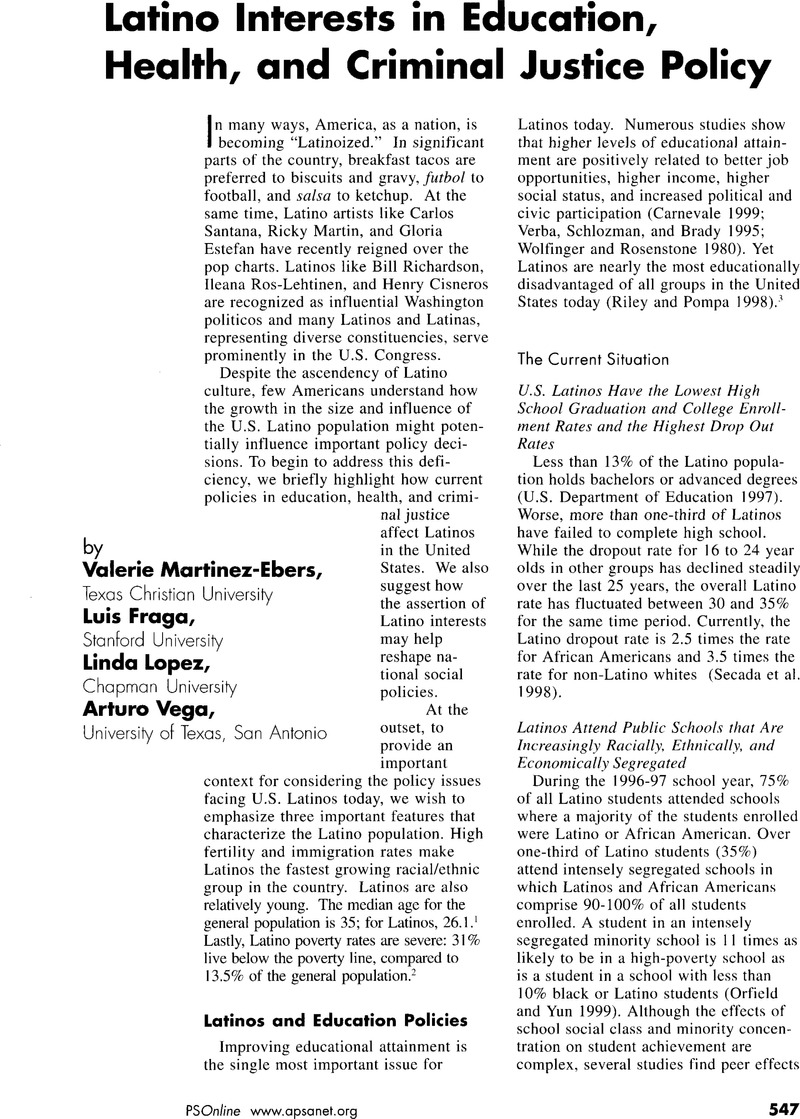Crossref Citations
This article has been cited by the following publications. This list is generated based on data provided by Crossref.
Bratton, Kathleen A.
2006.
The Behavior and Success of Latino Legislators: Evidence from the States*.
Social Science Quarterly,
Vol. 87,
Issue. 5,
p.
1136.
Kiasatpour, Soleiman
and
Lasley, Scott
2008.
Overcoming the Challenges of Teaching Political Science in the Hispanic-Serving Classroom: A Survey of Institutions of Higher Education in Texas.
Journal of Political Science Education,
Vol. 4,
Issue. 2,
p.
151.
Casellas, Jason P.
and
Ibarra, Joanne D.
2012.
Changing Political Landscapes for Latinos in America.
Journal of Hispanic Higher Education,
Vol. 11,
Issue. 3,
p.
234.
Pleites-Hernandez, Giovanny D.
2023.
Tweeting for Latinos? Legislative Communication in the 115th U.S. House of Representatives.
Congress & the Presidency,
Vol. 50,
Issue. 2,
p.
190.





